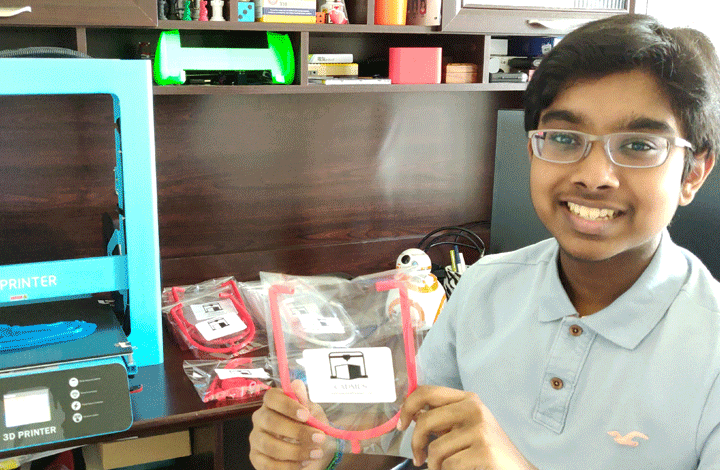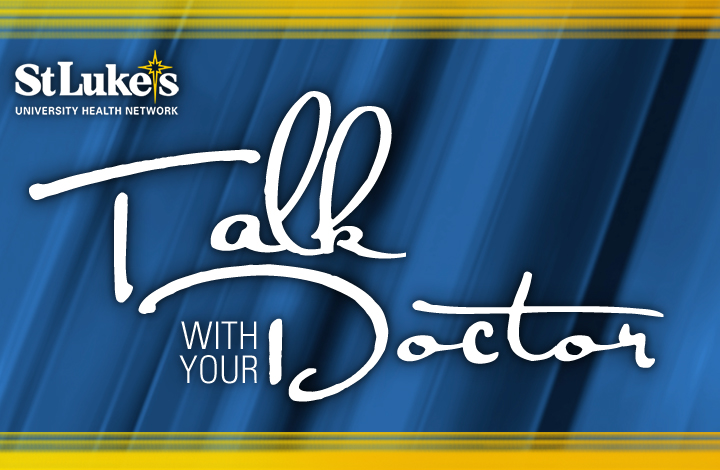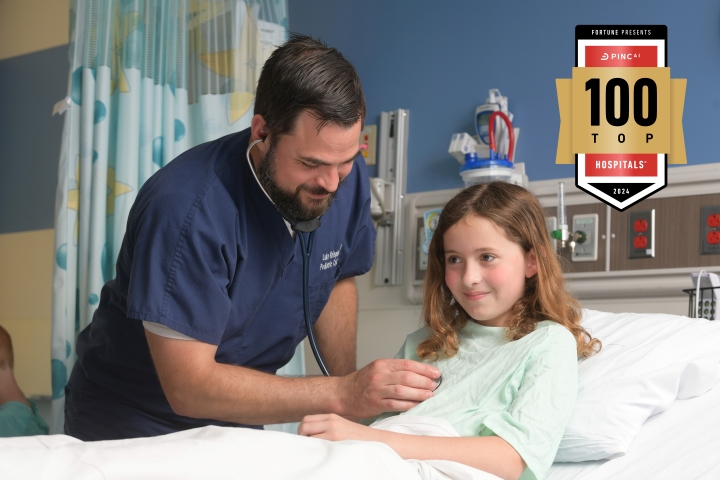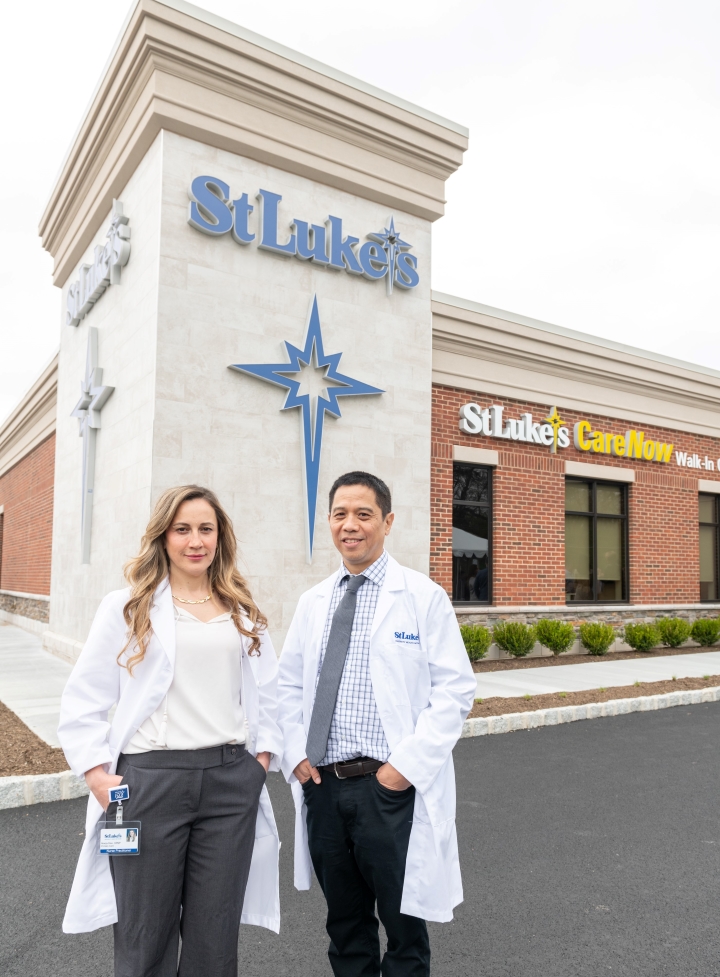News

15-year-old Breinigsville lad Varun Pandian with 3D-printed stethoscope part.
Parkland High School student Varun Pandian owns four 3D printers he often uses for school science fair projects. But since March, the 15-year-old Breinigsville lad has been supplying St. Luke’s University Health Network with scads of flexible “ear” tubing and “bells” (the piece that detects heart and lung sounds) for stethoscopes that he’s printed at home.
3D printing is a fun hobby, he says, but his donations have meaning beyond that: “I’m just doing my part in helping” the Network during the COVID-19 pandemic. He has delivered 100 plastic items to Megan Augustine, director of the Simulation Center at St. Luke’s, in the past six weeks.
The St. Luke’s Simulation Center staff, who typically create and design “task trainers” and models (e.g., body parts) for simulation and training, have instead been making personal protective gear and medical devices with the 3D printer in the Simulation Center lab since early March, when the pandemic hit.
And their efforts are being bolstered in a big way through the expertise and generosity of Pandian and others in the 3D printing community who have stepped up to join them in building up the Network’s inventories of this critical equipment.
3D printing starts with a 3D model from a computer program that is then created by laying down successive layers of material until an object is built.
Participants in this group effort are fabricating parts for 3D masks and face shields, PAPR protective hoods, viral/bacterial filters, intubation cubes and 3D stethoscopes. As the national shortage of these commercially made items becomes more acute, this sophisticated solution takes on increasingly vital value.
Stay-at-home dad Taylor Nielsen says he can turn on his 3D printer and let it work as he tends to other chores in his Nazareth home. So far, the 33-year-old has made intubation filters, stethoscope parts, “ear savers” for masks and head bands for face shields.
“I love it,” he says, adding that he has rallied friends to donate spools of filament, the raw materials for printing. He says he’s also giving back to St. Luke’s in thanks for an “excellent experience” he had there as a patient.
“I’m amazed by this fantastic outpouring of support from the community,” says Augustine. “It’s a ‘pay it forward’ kind of attitude, and I am in awe by the generosity the community has shown for our Network.”
These good neighbors, who learn about the opportunity to help on St. Luke’s website, from a friend or relative or in the news media, download the intricate designs the Sim Center posted on SLUHN.org. They print or (laser) cut the items and deliver them to the Sim Center where they are assembled, tested and then distributed to caregivers.
Neil Deshmukh learned of the opportunity to 3D print protective equipment and stethoscopes from his mother, an endocrinologist with St. Luke’s. He won permission from his school, Moravian Academy, to bring home three printers that he’s been using to make dozens of bacterial filters for ventilators, parts for stethoscopes and head bands for face shields.
The recent high-school graduate has been accepted to attend MIT starting this fall, though he’s unsure if classes will be virtual or in person. Nevertheless, the 17-year-old says he’s learning about defect-free manufacturing and process efficiency and calls this experience helping the Network’s front-line workers “really cool.”
“Little things do add up,” Augustine says. So far, nearly 3,000 parts have been made and delivered to St. Luke’s by their volunteer printing partners in just two months.
“It’s humbling to know people are this generous, passionate and resourceful,” she adds. “"In a way, we’re all helping keep those on the front lines protected and safe as they care for us and save lives during this highly infectious time."
Media Contact
Sam Kennedy, Corporate Communications Director, 484-526-4134, samuel.kennedy@sluhn.org
About St. Luke’s
Founded in 1872, St. Luke's University Health Network (SLUHN) is a fully integrated, regional, non-profit network of more than 15,000 employees providing services at 11 hospitals and 300 outpatient sites. With annual net revenue greater than $2 billion, the Network’s service area includes 11 counties: Lehigh, Northampton, Berks, Bucks, Carbon, Montgomery, Monroe, Schuylkill and Luzerne counties in Pennsylvania and Warren and Hunterdon counties in New Jersey. Dedicated to advancing medical education, St. Luke's is the preeminent teaching hospital in central-eastern Pennsylvania. In partnership with Temple University, St. Luke's created the Lehigh Valley's first and only regional medical school campus. It also operates the nation’s longest continuously operating School of Nursing, established in 1884, and 34 fully accredited graduate medical educational programs with 263 residents and fellows. St. Luke's is the only Lehigh Valley-based health care system with Medicare’s five- and four-star ratings (the highest) for quality, efficiency and patient satisfaction. St. Luke’s is both a Leapfrog Group and Healthgrades Top Hospital and a Newsweek World’s Best Hospital. In 2019, three of IBM Watson Health's 100 Top Hospitals were St. Luke's hospitals. St. Luke's University Hospital has earned the 100 Top Major Teaching Hospital designation from IBM Watson Health seven times total and five years in a row. St. Luke's has also been cited by IBM Watson Health as a 50 Top Cardiovascular Program. Utilizing the Epic electronic medical record (EMR) system for both inpatient and outpatient services, the Network is a multi-year recipient of the Most Wired award recognizing the breadth of the SLUHN's information technology applications such as telehealth, online scheduling and online pricing information. St. Luke's is also recognized as one of the state's lowest cost providers.


